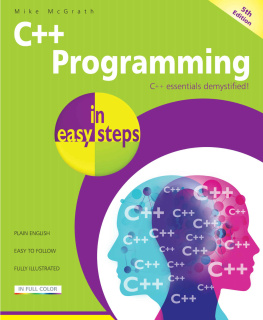The Simple Network Management Protocol (SNMP) is an Internet-standard protocol for managing devices on IP networks. Many kinds of devices support SNMP, including routers, switches, servers, workstations, printers, modem racks, and uninterruptible power supplies (UPSs). The ways you can use SNMP range from the mundane to the exotic: it's fairly simple to use SNMP to monitor the health of your routers, servers, and other pieces of network hardware, but you can also use it to control your network devices, page someone, or take other automatic actions if problems arise. The information you can monitor ranges from relatively simple and standardized items, like the amount of traffic flowing into or out of an interface, to more esoteric hardware-and vendor-specific items, like the air temperature inside a router.
Given that there are already a number of books about SNMP in print, why write another one? Although there are many books on SNMP, there's a lack of books aimed at the practicing network or system administrator. Many books cover how to implement SNMP or discuss the protocol at a fairly abstract level, but none really answers the network administrator's most basic questions: how can I best put SNMP to work on my network? How can I make managing my network easier?
We provide a brief overview of the SNMP protocol in and then spend a few chapters discussing issues such as hardware requirements and the sorts of tools that are available for use with SNMP. However, the bulk of this book is devoted to discussing, with real examples, how to use SNMP for system and network administration tasks.
This book answers all these questions and more. Our goal is to demystify SNMP and make it more accessible to a wider range of users.
Organization
, Introduction to SNMP and Network Management, provides a nontechnical overview of network management with SNMP. We introduce the different versions of SNMP, managers and agents, network management concepts, and change management techniques.
, SNMPv1 and SNMPv2, discusses the technical details of SNMP versions 1 and 2. We look at the Structure of Management Information (SMI) and the Management Information Base (MIB) and discuss how SNMP actually workshow management information is sent and received over the network.
, SNMPv3, discusses SNMP version 3, which is now a full standard that provides robust security for SNMP.
, NMS Architectures, helps you to think through strategies for deploying SNMP.
, Configuring Your NMS, provides a basic understanding of what to expect when installing NMS software by looking at two NMS packages, HP's OpenView and Castle Rock's SNMPc.
, Configuring SNMP Agents, describes how to configure several SNMP agents for Unix and Windows, including the Net-SNMP agent. To round out the chapter, we discuss how to configure the embedded agents on two network devices: the Cisco SNMP agent and the APC Symetra SNMP agent.
, Polling and Setting, shows how you can use command-line tools and Perl to gather (poll) SNMP information and change (set) the state of a managed device.
, Polling and Thresholds, discusses how to configure OpenView and SNMPc to gather SNMP information via polling. This chapter also discusses RMON configuration on a Cisco router.
, Traps, examines how to send and receive traps using command-line tools, Perl, OpenView, and other management applications.
, Extensible SNMP Agents, shows how several popular SNMP agents can be extended. Extensible agents provide end users with a means to extend the operation of an agent without having access to the agent's source code.
, Adapting SNMP to Fit Your Environment, is geared toward Perl-savvy system administrators. We provide Perl scripts that demonstrate how to perform some common system administration tasks with SNMP.
, MRTG, introduces one of the most widely used open source SNMP applications, the Multi Router Traffic Grapher (MRTG). MRTG provides network administrators with web-based usage graphs of router interfaces and can be configured to graph many other kinds of data.
, RRDtool and Cricket, introduces RRDtool and Cricket. Used together, these tools provide graphing techniques like those in MRTG, but with added flexibility.
, Java and SNMP, discusses how to use Java to build SNMP applications.
, Using Input and Output Octets, discusses how to use OpenView to graph input and output octets.
, More on OpenView's NNM, discusses how to graph external data with Network Node Manager (NNM), add menu items to NNM, configure user profiles, and use NNM as a centralized communication interface.
, Net-SNMP Tools, summarizes the usage of the Net-SNMP command-line tools.
, SNMP RFCs, provides an authoritative list of the various RFC numbers that pertain to SNMP.
, SNMP Support for Perl, is a good summary of the SNMP Perl module used throughout the book along with an introduction to the Net-SNMP Perl module.
, Network Management Software, presents an overview of network management software by category.






